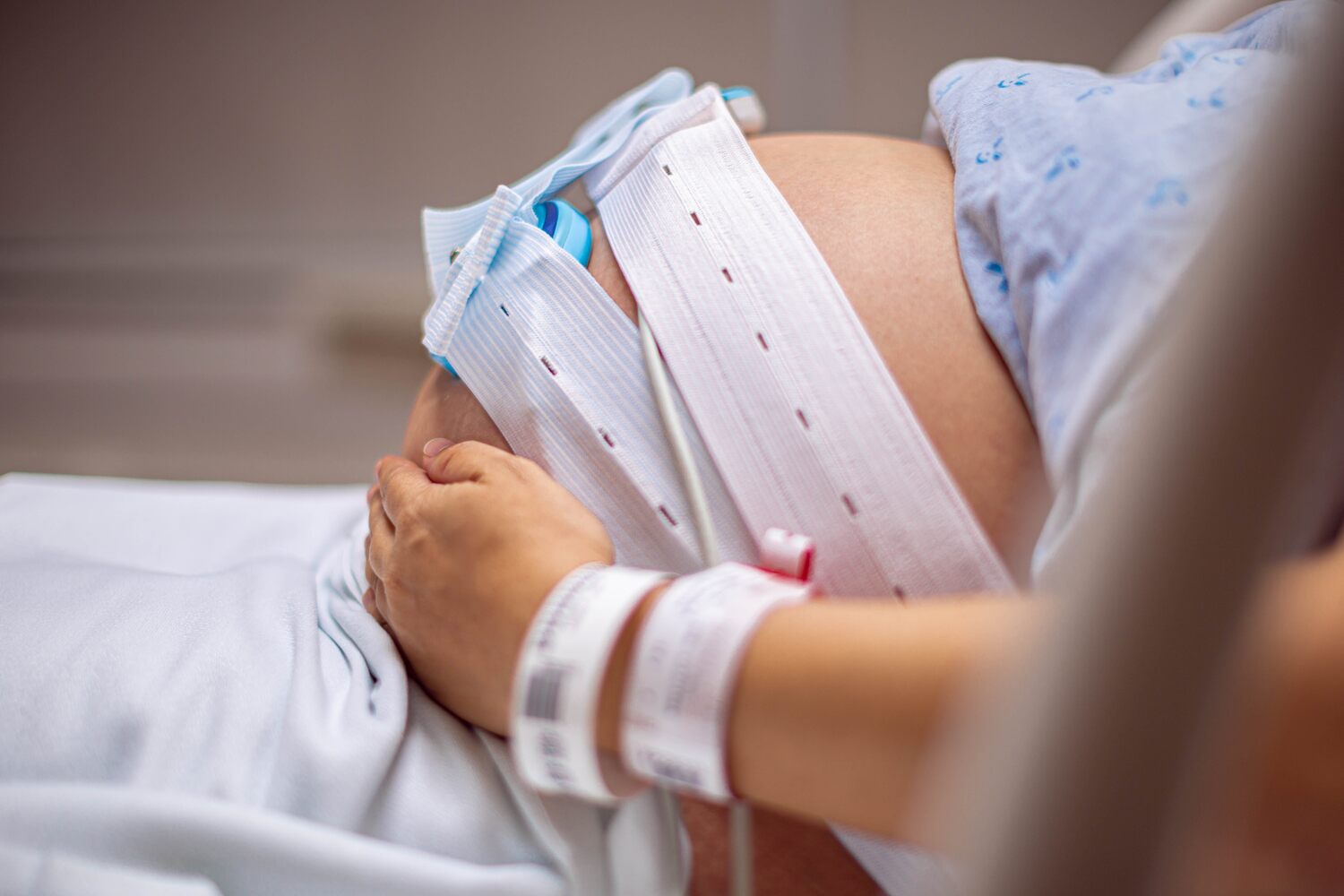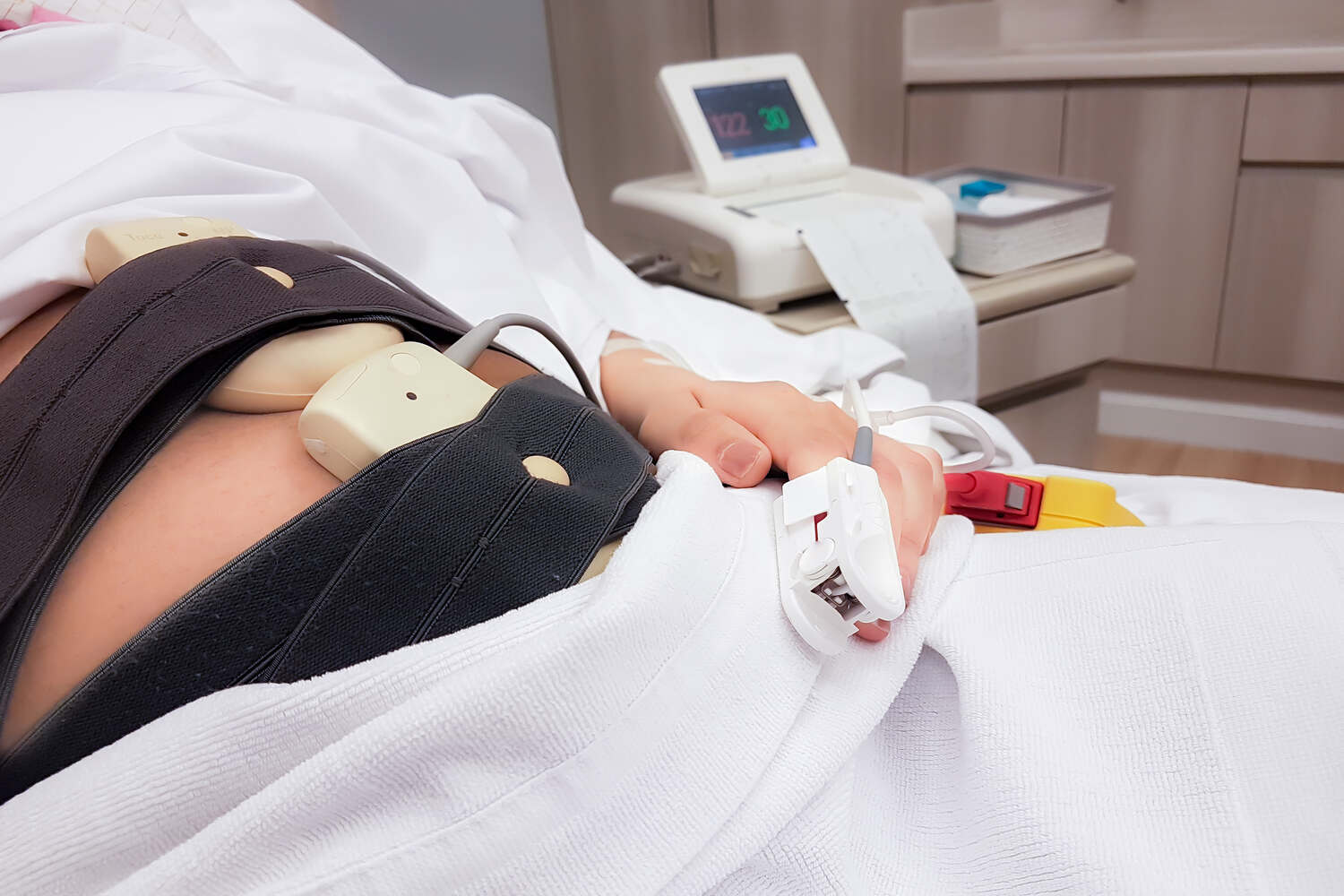
Pregnancy requires an array of antenatal tests to make sure that both the mother and baby are healthy throughout the beautiful journey. These include a number of blood tests, urine tests and a series of ultrasound scans. Contraction Stress Test gives an insight about the well being of the baby and helps in early intervention in case of any medical issue. Certain screening tests are also routinely done to rule out some diseases.
Most of the antenatal tests are meant for all pregnancies irrespective. However, here are few specific tests that are directed to a few cases of complicated pregnancies. Contraction Stress Test(CST) is one such test that is not routinely performed and is indicated only in certain pregnancies. Here is an overview of CST.
In This Article
- Video of Contraction Stress Test
- What is a Contraction Stress Test?
- Why is CST Done?
- When is CST Done?
- Procedure of the Contraction Stress Test
- How to Interpret CST Results?
- Are There Any Risks of This Procedure?
- FAQ’s
Video Of Contraction Stress Test
What is a Contraction Stress Test?
Contraction stress test (CST) is an antenatal test indicated in a few complicated cases of pregnancy. It is required by the healthcare provider to check if the fetus stays healthy during the process of labour. In other words, it helps in determining the baby’s heart rate during the stressful process of uterine contractions. During labour, a woman undergoes series of uterine contractions during which the oxygen and the blood flow to the placenta slows down temporarily. In most cases baby tolerates the contractions well due to the presence of a well oxygenated placenta.
The contractions during the process of childbirth are brought upon by the hormone oxytocin. Most of the tiny hearts handle the stress well. But in some babies, there is a significant drop in the oxygenation levels and the heart rate, leading to fetal distress. Fetal heart rate testing has considerable benefits and notable shortcomings that must be appreciated to provide optimal perinatal care [1].
So, in CST, the woman is injected intravenously with Pitocin hormone (synthetic form of oxytocin) hence, causing the uterine contractions, allowing the healthcare provider to record the baby’s heart rate.
In short, CST mimics the process of labour to see how well the baby tolerates the drop in oxygen levels. CST is also referred to as Oxytocin Challenge Test.
Why is CST Done?

CST is done in those pregnancies where an abnormal result has been obtained in the Non stress test or the Biophysical Profile. It is also indicated in certain high-risk pregnancies and if the woman had a previous history of a complicated pregnancy. NST differs from CST in being able to monitor the external fetal heart rate without inducing contractions and hence more comfortable.
Hence, the results help the healthcare provider to decide whether the baby is fit to undergo the process of labour or to opt for Caesarean section in case of an abnormal result. There is a strong correlation between the loss of fetal heart reactivity and the repeated suspicious contraction stress test. The chief value of the suspicious test is as a marker in the high-risk pregnancy appraisal for consideration of additional fetal and maternal evaluation and possible clinical management alteration.[2]
When is CST Done?
Non stress test or biophysical profile is done initially to determine the parameters. If the results are abnormal then CST is indicated, usually in later part of pregnancy. The ideal time is after 34 week or even in the stage of early labour. Then, depending on the results, a repeat test might be needed in a week or two.
Procedure of the Contraction Stress Test

This is typically an outpatient procedure where after the test is completed the lady can go home after few minutes of observation. The results of the test are obtained immediately.
Preparation:-
The woman is asked to do 6-8 hours of fasting before the procedure as in few cases an emergency C section might be required. One has to empty the bladder prior to the procedure. Pregnant women has to stop smoking (in case of smoker) at least 2 hours prior to the test as smoking might interfere with the test results.
Procedure:-
The woman is asked to lie down on the back preferable with a tilt to lest side. Two sensors are then strapped over the abdomen with the help of two respective belts. One device records the uterine contractions and the other one monitors the fetal heart rate. Pitocin is administered intravenously to induce mild contractions which are not sufficient to induce labour.
Observation :-
The dose is adjusted until a minimum of 3 contractions are recorded in a span of 10 minutes with each contraction lasting longer than 45 seconds. Sometimes instead of administering Pitocin, the nipples are stimulated by gentle massage in order to induce endogenous release of oxytocin.
The recent introduction of nipple stimulation as a means of achieving uterine contraction has simplified performance of contraction stress tests and raises the possibility that that test may be a more rapid approach to antepartum fetal heart rate testing than the nonstress test [3].
During the contractions the baby’s heart rate and the oxygenation levels are recorded on the graph paper as two distinct lines. Once the data is recorded iv Pitocin is stopped and the woman is kept under observation till the contractions resolve completely.The whole procedure takes around 2 hours.
How to Interpret CST Results?
The interpretation can be as follows:
1. A Negative or Normal Test
This indicates that the baby’s heart rate remained stable or did not slow down during the uterine contractions. This indicates a healthy or a well oxygenated placenta and predicts that the baby will remain healthy during normal labour. A repeat test after a week or so might be required depending on the healthcare provider.
2. A Positive Test or Abnormal Test
This indicates that there was significant slowing of the baby’s heart rate during the contractions which could be a cause of concern during the labour process. C section or assisted delivery is required in such cases as the baby might not tolerate the labour contractions. A positive test suggests that the fetus is at increased risk, but death is not necessarily imminent [4]. Hence, a very close observation is needed.
Are There Any Risks of This Procedure?

The major risk includes preterm labour in reaction to the oxytocin administered. So, this procedure must not be indicated in women with a risk of preterm labour. Women with multiple pregnancies (Twins, triplets) and those who had Caesarean sections must not undergo CST due to a risk of uterine rupture. In multiple pregnancy a CST might induce early labour.
Women with placenta previa and cervical incompetence also adds up to the risk. Hence, CST is a very helpful antenatal test that helps in predicting the well-being of the baby during the stress of labour. Thus, helping the physician in choosing the best delivery plan for the patient. It is helpful in being able to minimise the risks and reducing possible complications during delivery.
Thus, CST is an important test that helps in predicting the well-being of the baby during the process of labour. Depending on the test results, the healthcare provider can decide upon the plan of delivery and thus, helps in minimising the risk factors associated with labour. The chances of fetal distress can be greatly minimised by this. Induction of labor with direct fetal monitoring should be attempted in a term gestation where the cervix is ready for induction of labor and where rapid intervention by cesarean section is possible.[5]
FAQ’s
1.How Long Is A Contraction Test?
The test usually requires around 2 hours based on the interpretation. In case of an abnormal result the woman is asked to stay back for further monitoring and intervention if required.
2. Is CST Painful?
Its not a painful test, but some women might experience a little discomfort owing to the contractions.
References:-
- Nonstress Testing And Contraction Stress Testing [https://www.sciencedirect.com/science/article/abs/pii/S088985450570098X]
- The Suspicious Contraction Stress Test [https://journals.lww.com/greenjournal/abstract/1978/04000/the_suspicious_contraction_stress_test.6.aspx]
- Contraction Stress Test for Antepartum Fetal Evaluation [https://journals.lww.com/greenjournal/abstract/1975/04000/Contraction_Stress_Test_for_Antepartum_Fetal.12.aspx]
- Nonstress and contraction stress fetal heart rate monitoring. A randomized trial to determine which is the faster primary test. [ https://europepmc.org/article/med/3367336]
- Pregnancy outcome in the patient with a nonreactive nonstress test and a positive contraction stress test [https://www.sciencedirect.com/science/article/abs/pii/0002937881904026]
